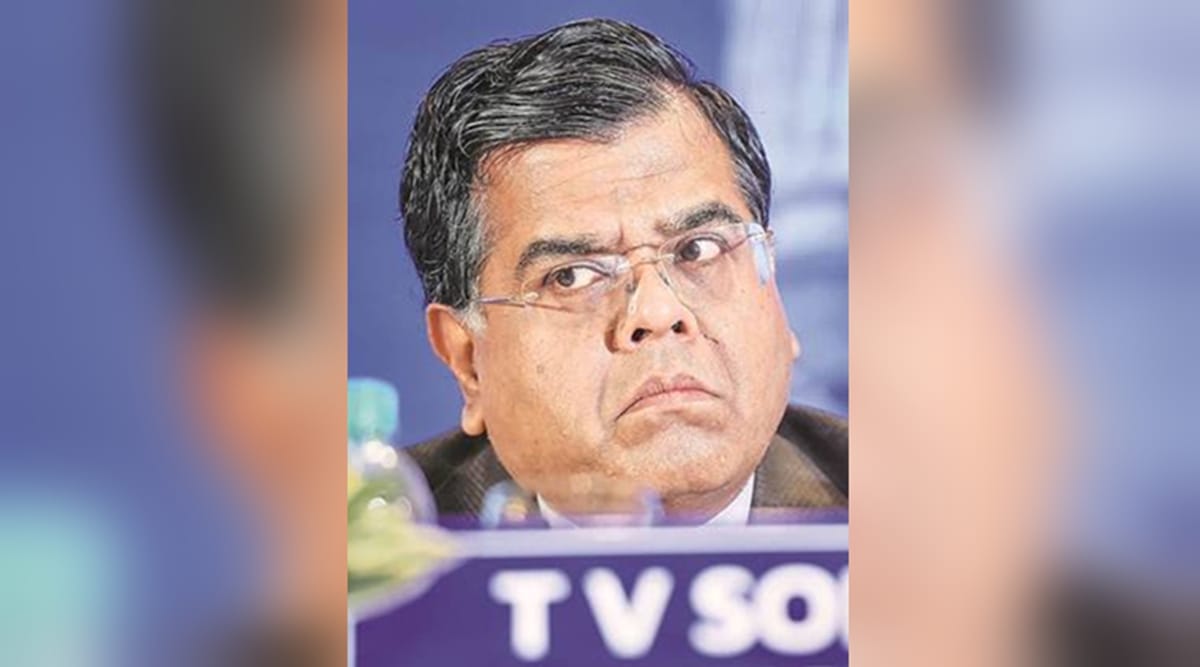 TV Somanathan, Expenditure Secretary at Ministry of Finance.
TV Somanathan, Expenditure Secretary at Ministry of Finance. Working with a “constrained resource envelope” in the aftermath of the Covid-19 pandemic ahead of Budget 2021-22, the government essentially had to make a choice between two policy options: handouts and capital expenditure. “We chose capex,” TV Somanathan, Expenditure Secretary, Ministry of Finance, told The Indian Express in a post-Budget interview, responding to a question on the policy choices.
The 34.46 per cent hike in capital expenditure in 2021-22 over the Budget Estimate of 2020-21, to be utilised mostly on infrastructure sectors including rail and roads, will have a huge multiplier effect, boost investment, generate jobs and improve incomes, he said.
“Relaxation of the fiscal limit helped in expansion to some extent, but this is not limitless. There are choices to be made. The choice is between handouts and capital expenditure. In handouts, it would reach the hands of people immediately. For instance, in Jan Dhan, the propensity to save was high. So, if you release one rupee, people may save for a rainy day,” Somanathan said.
Instead, the government was of the view that if money was spent in construction, the high multiplier effect would help. “Studies of RBI and NIPFP show the multiplier to be in the 2.5-4.2 range for government capital expenditure. This will trigger growth, starting a virtuous cycle which will then crowd in private spending and private expenditure. With one rupee of capital we could hopefully generate 2.5 rupees of demand,” he said.
Somanathan said the government is trying to reach the target group of unskilled and semi-skilled workers through increased government expenditure in the construction sector. “I feel in the present circumstances, the capital expenditure strategy is the best optimisation of growth and helping the needy,” he said.
Meanwhile, the government has made normal allocation for MGNREGA and PDS. “They are still in place… It will be funded adequately if more money is required. So those safety nets continue to be in place,” he said.
With the spending push, the government has delayed the glide path for fiscal consolidation, aiming to cap it at 4.5 per cent of the GDP by 2025-26. For next fiscal, it has been pegged at 6.8 per cent of the GDP.
Reprioritising expenditure towards capital and keeping the estimates as realistic as possible was a key objective ahead of Budget. For rural employment guarantee scheme like MNREGS, Somanathan said, the government was open to increasing funds. “It’s a demand based scheme. So by its nature, it’s a demand. If required, we will provide more for it,” he said.
The government is also working towards changing the system for reaching out to migrant workers, the worst affected during the pandemic. Somanathan said 11 states had finished work for One Nation, One Ration and few more states were expected to do the same before February 15.
“Unless all states are covered, we won’t achieve our purpose because we won’t know where the worker has migrated from or to. He will be able to draw his ration only weh both the original and destination states are covered. Many states have met the condition of 100 per cent installation of POS machines and 100 per cent vent enrolment of Aadhaar-seeded ration cards. This fix is being done to the system so that PDS is portable,” he said, adding that work is also being undertaken for the national migrant workers portal.